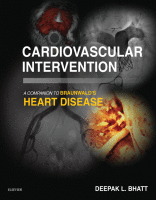Physical Address
304 North Cardinal St.
Dorchester Center, MA 02124

Open full size image Introduction Over the past few decades, major technological improvements in Cardiac Catheterization Laboratory (CCL) equipment have enabled acquisition of images with better quality at a potentially lower radiation dose. Concurrently, the number and complexity of angiographic…

Open full size image Introduction Coronary balloon angioplasty (PTCA), introduced in 1977, was initially limited to treatment of focal, noncalcified, proximal, concentric coronary lesions. Initially case selection was confined to patients with normal left ventricular function and single vessel coronary…

Open full size image The major aims of pharmacotherapy during percutaneous coronary intervention (PCI) and invasive cardiac procedures are to avoid the adverse consequences related to iatrogenic plaque rupture during balloon angioplasty and stent deployment, to reduce the hazards of…

Open full size image Arterial access for common coronary and vascular procedures can be obtained via the common femoral artery, radial, ulnar, or brachial arteries. More recently, the subclavian artery and direct aortic access are being used for transcatheter aortic…

Open full size image Introduction Quality of care has been a major focus of medical care since the Institute of Medicine focused attention on the unacceptable degree of variability in care and concern about patient safety and effectiveness. In its…

Open full size image The Innovator of Angioplasty There are few who are acknowledged as true pioneers in medicine, but Andreas Grüntzig was surely one ( Figure 1-1 ). He quite simply not only coined the term interventional cardiology, he…